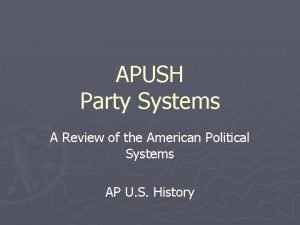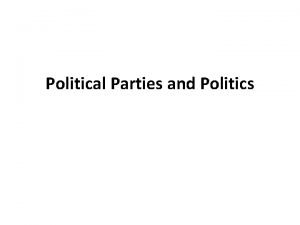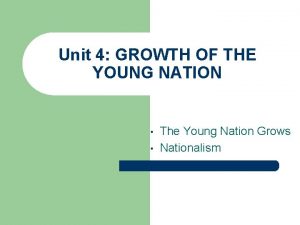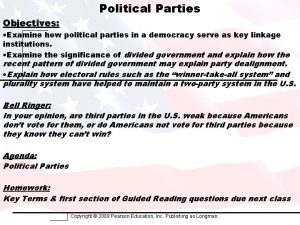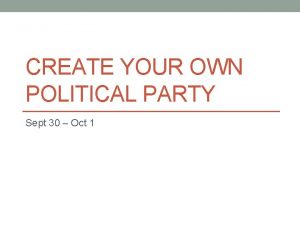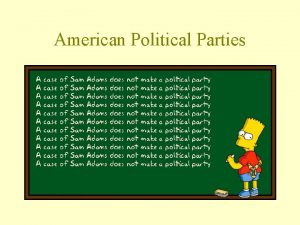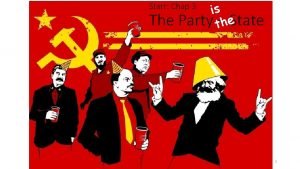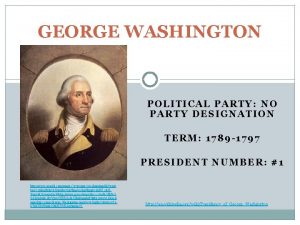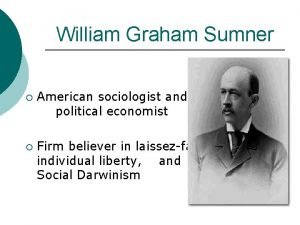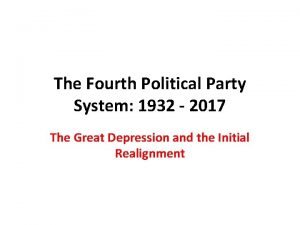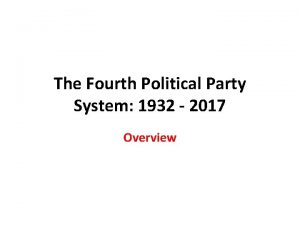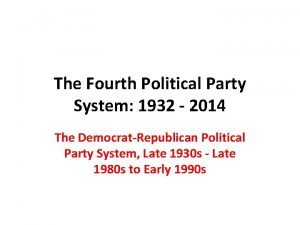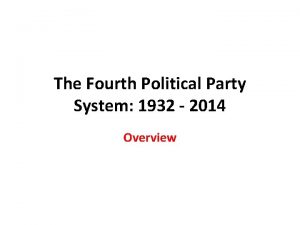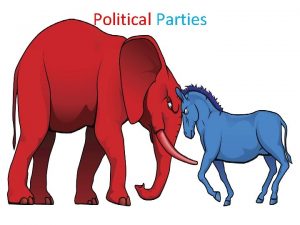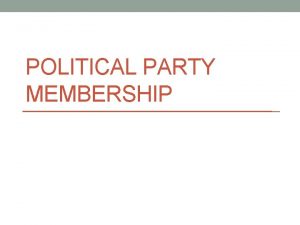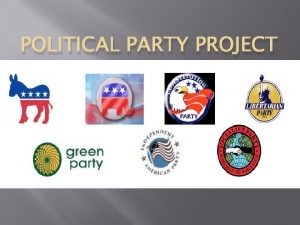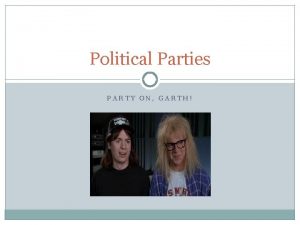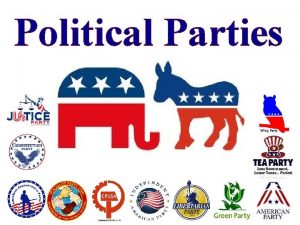The Fourth Political Party System 1932 2015 The
















- Slides: 16

The Fourth Political Party System: 1932 - 2015 The Democrat-Republican Political Party System, Late 1930 s - Late 1980 s to Early 1990 s

Divisions Began to Appear Between Northern and Southern Democrats in 1936 over: 1) Roosevelt’s “Court Packing” Scheme of 1937 2) The Fair Labor Standards Act of 1937 3) Roosevelt’s Attempt to “Purge” Some Southern Democrats in the 1938 Elections. 4) General unease with the 1935 Wagner Act (National Labor Relations Act) in the South

The Court Under Chief Justice Hughes: 1932 – 1937 “The Switch in Time That Saved 9”

In 1937 -38 Voting on the Fair Labor Standards Act (Minimum Wages) Opened a serious Split between Northern and Southern Democrats. Southerners did not want Southern Agriculture to be constrained by the minimum wage because many of the Laborers were Black.


The Attempt to Purge Conservative Democrats in the 1938 Primaries The Purge was an effort led by President Roosevelt to target certain conservative senators for defeat in Democratic primaries, including Walter George of Georgia, Millard Tydings of Maryland Ellison Smith of South Carolina, along with the chairman of the House Rules Committee, John J. O'Connor of New York. The Southern Democrats were outraged by Roosevelt’s actions.

Walter F. George U. S. Senator from Georgia, 22 November 1922 – 2 January 1957 29 January 1878 – 4 August 1957

George supported some programs that he saw as beneficial to Georgia, primarily the Tennessee Valley Authority, Social Security, the Rural Electrification Administration, and the Agricultural Adjustment Act. In Roosevelt’s first term he supported 34 New Deal bills that went through the Senate, opposing only 10.

During Roosevelt's second term, George opposed rigorous regulation of utility companies, the Wealth Tax Act, and Roosevelt's attempt to pack the U. S. Supreme Court with justices favorable to his New Deal policies. During World War II George strongly supported Roosevelt’s War policies and shifted his views to be something of an Internationalist. United Nations. He supported the establishment of the

The National Labor Relations Act of 1935 (also known as the Wagner Act after New York Senator Robert F. Wagner) guarantees basic rights of private sector employees to organize into trade unions, engage in collective bargaining for better terms and conditions at work, and take collective action including a strike if necessary. The act also created the National Labor Relations Board, which conducts elections that can require employers to engage in collective bargaining with labor unions.

The “Sit Down” Strike at the General Motors Plant in Flint, MI, 30 December 1936 -- 11 February 1937





 Third and fourth party logistics
Third and fourth party logistics Second party system apush
Second party system apush Third party logistics advantages and disadvantages
Third party logistics advantages and disadvantages Fourth party payment
Fourth party payment Populism political cartoon
Populism political cartoon Political parties
Political parties Monroe doctrine cartoon meaning
Monroe doctrine cartoon meaning Objectives of political party
Objectives of political party Create a political party project
Create a political party project Kathy cocuzzi political party
Kathy cocuzzi political party Political party
Political party Political party
Political party Political party project
Political party project Political party organization chart
Political party organization chart George washington political party
George washington political party William graham sumner political party
William graham sumner political party Farmer protest cartoons
Farmer protest cartoons

